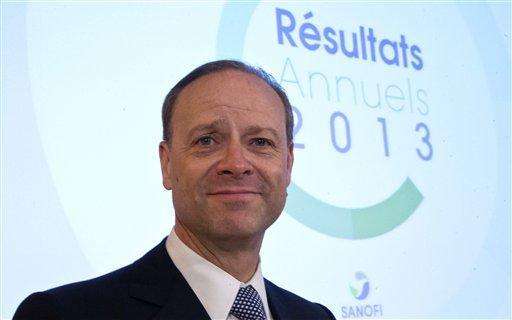The Odd Ouster of Sanofi’s Former CEO
 On Oct. 29, the shareholders of Sanofi announced that they had fired CEO Chris Viehbacher.
On Oct. 29, the shareholders of Sanofi announced that they had fired CEO Chris Viehbacher.
The details were vague at first.
During the drugmaker’s annual earnings call, chairman Serge Weinberg explained that the board made this decision due to disagreements over Viehbacher’s management style. Weinberg also criticized Viehbacher’s lack of communication with the board.
A week later, numerous reports surfaced citing specific reasons why the board felt they needed to quickly remove the businessman from this position.
Viehbacher was hired in December 2008 after he led GlaxoSmithKline. He was known to speak his mind and play hardball during any negotiations. Observers felt this was one of the reasons why Sanofi took him on– because the company needed someone to drastically alter company culture.
Viehbacher’s first course of action was to initiate a massive round of layoffs. Sanofi was plagued by inefficient bureaucracies after multiple mergers, so Viehbacher wanted to streamline. Next, he altered the company’s name and moved the headquarters from the outskirts of Paris to the more populated section surrounding the Champs-Elysees.
Sanofi had been struggling with its product line. Bloomberg’s Albertina Torsoli wrote that the firm had high hopes for a weight-loss pill called Accomplia. Unfortunately, the drug received a failing grade from the FDA for its litany of harmful side- effects.
Viehbacher launched a number of strategic acquisitions in order to help the company grow. Biotechnology was added to Sanofi’s slate after it purchased Cambridge-based Genzyme for $20 billion in 2011. This maneuver gave Sanofi a research base in the United States as well as access to a potentially steady source of new income: drugs for rare diseases.
Viehbacher focused on purchasing assets in the U.S. because drug sales in this country comprise 50 percent of all global drug sales, according to Business Insider.
These gambits paid off. Sanofi’s stock performed remarkably well under his watch. However, a convergence of events this year made tensions rise behind closed doors.
In June 2014, The Wall Street Journal reported that Sanofi was considering shedding large portfolios of outdated drugs. The portfolio was worth $8 billion and it was dragging down profits because these older products weren’t selling well.
An October 2014 report from Bloomberg explained that Viehbacher neglected to discuss a specific plan for the sale with Sanofi’s board of directors.
Another reported controversy was that Viehbacher moved from France to Boston earlier this year to be closer to his family. Fortune’s Eleanor Boxham wrote that chairman Weinberg admitted this move caused some communication difficulties.
Ultimately, poor financial results for Q3 caused the shareholders to reach a breaking point. The board fired the high-flying pharma executive.
Noelle Mennella and Carolyn Cohn of Reuters Canada wrote that members of the financial community were shocked by this development. According to their analysis, the executive was well liked within the pharmaceutical industry and has been viewed as one of the best in the business.
Sanofi’s stock plummeted after the news broke. Some critics felt the decision was undeserved and made in haste.
Matthew Herper at Forbes offered his insight:
“It may be that the rift between Viehbacher and his board was too wide to be repaired— see that move to Boston. But instead of firing him abruptly, the board should have negotiated a plan where he got to try to put some codas on his tenure. Promises that the strategy– which sprung from Viehbacher, not the board– is going to continue will [sic] ring hollow until Sanofi finds a replacement. In the dealings I’ve had with Sanofi, being told that a decision needed to be filtered back through Paris meant it was going to get bogged down in bureaucracy, whereas Viehbacher himself was able to move quickly and decisively. Losing that will make the stock, in the words of Leerink analyst Seamus Fernandez, ‘dead money.’”
Weinberg will act as Sanofi’s temporary CEO until a replacement is found. Representatives from the company have not announced when a suitable candidate may take over.

